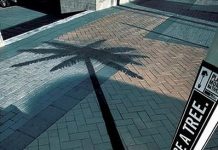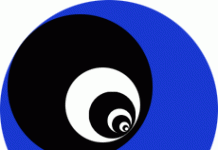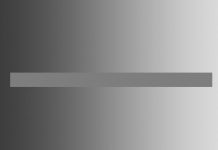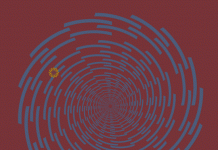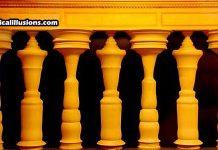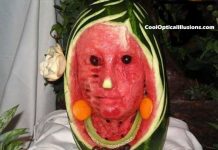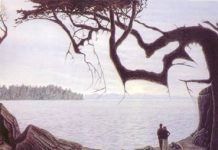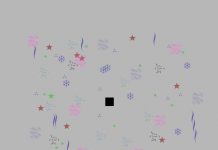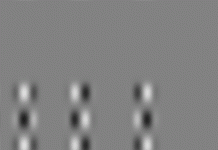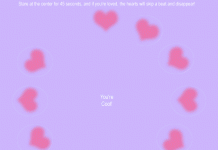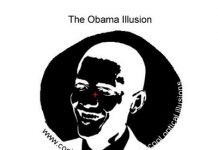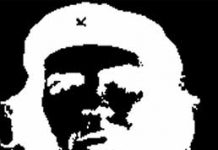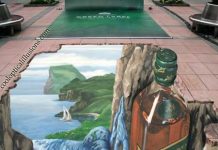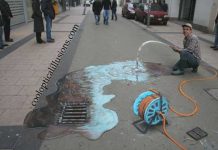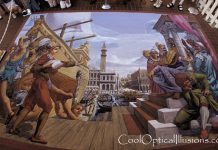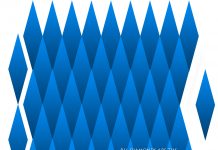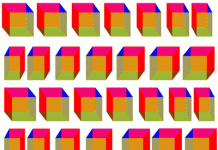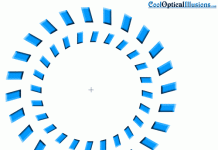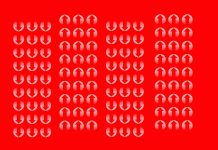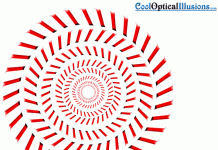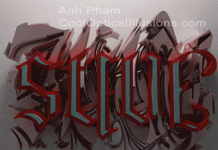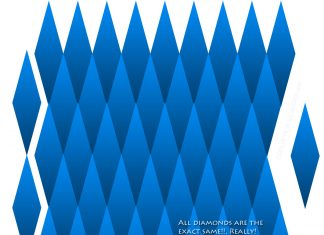Actually, you might be surprised to see that the pattern is really repeated circles!
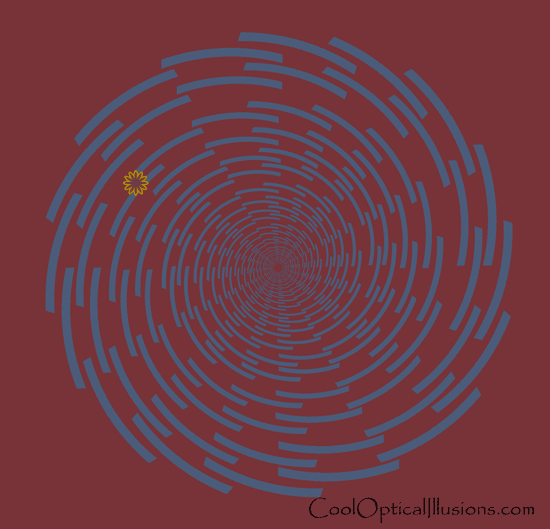
Here’s yet another original optical illusion. This is what you might call a Frasier spiral, named after the person who first identified this type of optical illusion.
Here’s how it works:
The repeating shape (a part of a circle) is angled slightly inward toward the center. Then the shape is repeated again and again, eventually forming a circle. Don’t believe me? Well, if you put your finger on the flower and trace it to the right, always following the shape that is slightly up and to the right of the shape, you’ll end up back where you started as you work your way around the circle.
Another slight illusion that you may see when you look at this picture is that you’ll perceive great depth to the picture, and it’ll look like a long tunnel – kind of reminds me of one of the old arcade games where you’d fly your craft through a never ending tunnel and shoot all the bad guys.
Also, if you’re new to optical illusions and art theory in general, another point that this optical illusion illustrates is the vanishing point. Here, we have what’s called “one point perspective” because all of the lines converge at one point. It doesn’t always have to be right in the center like this illusion, in fact, sometimes the vanishing point is off of the page. You can use vanishing points to accurately draw a picture of a street scene, where the tops and bottoms of the buildings, windows, doors, and cars that you draw all have two of the four lines pointing toward the vanishing point – for example, the top and bottom edge of the building would point toward the vanishing point, while the vertical (up and down) edges of the building would be parallel to the sides of the paper (pointing straight up and down). Confused? Good. Time to move on to the next illusion!



